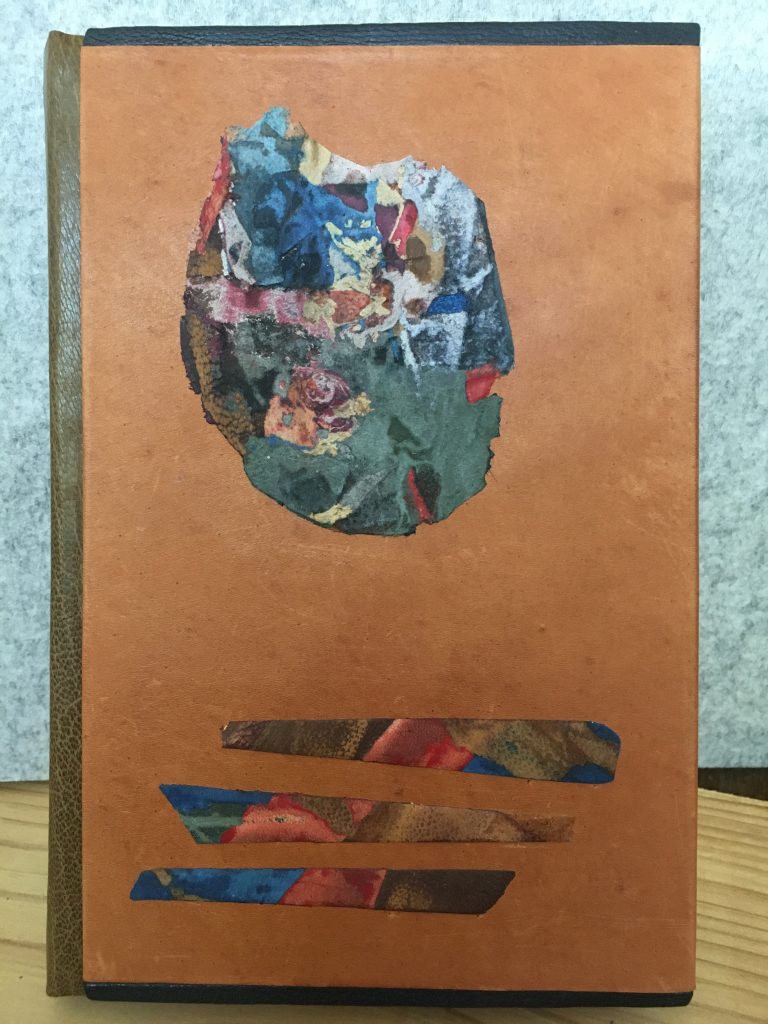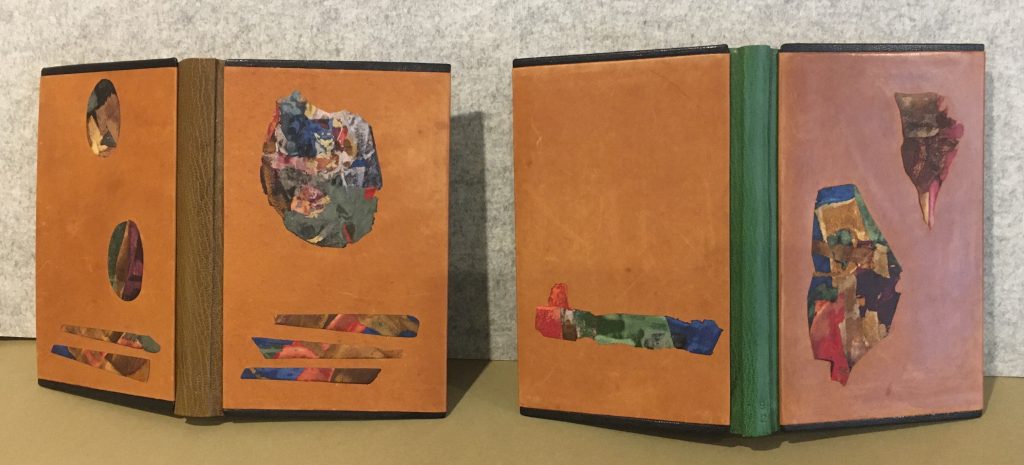Using lacunose as an onlay
Chris Johnson in virus time – April 2020
I used the rectangular panel of lacunose leather fragments on paper that I showed in a previous blog posting to make shaped onlay pieces for a pair of related books. The books are written in the 1930s by Olaf Stapledon: Last and First Men (published 1932, section sewn, paper cross grained – why?) and Last Men in London (part of a 1980s Penguin edition perfect binding, also cross grained but there’s more excuse with a perfect binding). The ‘Last Men’ are those of the 18th future species of humans, living on Neptune a hundred million years in the future. (Stapledon was a big long range thinker, following H.G. Wells and contemporary with Aldous Huxley’s Brave New World, an alternative vision of a future that is only 600 years ahead. He was a remarkably visionary, describing a world power struggle between China and USA in the 21st century… but that’s not the point here!). These books needed something relating to the themes of a very fractured future history and future evolved species of people who range from brutes to advanced brains.


The bindings are in simplified structure (that is, the spine is made on the book, the boards are covered separately and pasted onto the front and back). The leather spines are in complementary colours of the same type of fine, glossy goatskin. The board covers are plain soft kangaroo (very soft, it shows every mark) with a dark protective goatskin strip a few millimetres wide at the head and tail edges. The covers have multicolour onlays that are pieces made from the one lacunose panel.
I selected portions of the lacunose that suggested the themes in the books and cut them out along fragment boundaries, thinned them, sanding them back as far as I dared and then paring the edges. Sanding the back of the pieces with the front against a flat board reduced the uneven thickness. Some of the paper backing remains, so the shapes were stable and still in one piece. They still protrude a bit above the board leather, but the edges curve down to a smooth finish. The oval medallion pieces on the back were cut with a large oval craft punch and then thinned out to soften the edges.
The forms of the pieces were not planned when I was making the lacunose panel, but I chose them from what emerged. This method of design works better for me than trying to design too much in advance. (I do the same with paste paper, making it with broad strokes then finding the best bits afterwards.) I spent a couple of days juggling layouts with a larger set of prepared pieces, leaving them overnight and taking another look in the morning until it felt right. Then I thought I could do more lacunose pieces on the spines – but sanity said to me NO! (1) the spines are too narrow, and (2) less is enough!
Spine titles? – desirable for these books and for this design, maybe in gold lettering, sometime in the future. I did stamp the foot of the spines in blind with the publication date of each book (doing this in gold is a neat convention from the end of the 19th century) and that could be done too – when I have had more practice gold tooling.
